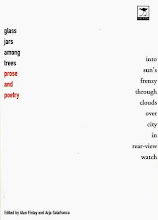“I am in agreement with Goethe, who said that
every day one ought to ‘hear a little song, read a good poem, see a fine
picture, and if it were possible, to speak a few reasonable words’. I would add
to this the need to love. Without it, the rest is dust.”
 |
| "The need to love. Without it, the rest is dust" |
Nineteenth century
writer George Sand lived life on her own terms. Born in 1804 in France, she married
young, and badly, as they say. After two children and trying to make it work,
she separated from her husband, and moved towards a creation of herself that
was constantly evolving. She’d already taken a man’s name to publish her works
under; and then had affairs with many. She finally settled into a long-term
relationship with the composer Chopin. A disagreement over his attitude towards
her daughter, hardened her towards him, and the sick composer died
not long after.
These are the
facts. Elizabeth Berg has fashioned the bare bones of Sand’s remarkable life
into a highly readable novel that throws a very human light on the woman behind
the fame and the reputation. Written in
the first person, Berg creates a credible Sand persona.
The narrative
alternates between Nohant, the family
home where Sand was brought up in the French countryside under her grandmother’s
tutelage, and the years of her adulthood, ranging from Paris, back to Nohant,
where Sand lived out her ill-fated marriage and then subsequent years.
 |
| Elizabeth Berg re-imagines the life of nineteenth century writer George Sand |
It also
touches on what Berg suggests was Sand’s great love – for the actress Marie
Dorval. In truth this lesbian affair was only rumoured, but Berg imagines the
brief affair and the life-long consequences it would have on Sand, with a
longing that suffuses the text. Love, and its many nuances framed much of Sand’s
life. Referring to Dorval, she writes: “‘Love has given me a new virginity,’
she said from the stage that night, and the line seemed directed at me.” And, “Being
loved let me breathe, let me work, let me live.”
And that a
nineteenth century not only lived life on her own terms, made an independent
and successful living as a writer, and took her love wherever she felt she
needed it, is remarkable.
As Sand moves into middle age, the novel loses
detail, and fades further as Sand enters old age. The Dream Lover is a beguiling read; full of interesting detail and
the novel brings this fascinating character and her world to gentle life.





.jpg)

No comments:
Post a Comment